Watching the ecology of endangered species
To the forest where the giant salamander lives
In Japan, the Japanese giant salamander is said to be found only west of Gifu Prefecture, and there are only about five locations in Japan that are relatively accessible to people and where natural observation may be possible.
While it is not permitted to approach the habitat of the Japanese giant salamander or conduct research without an expert accompanying you, the Japan Giant Salamander Center is located in the Akame Valley, and since experts are basically stationed there, night tours can be conducted.

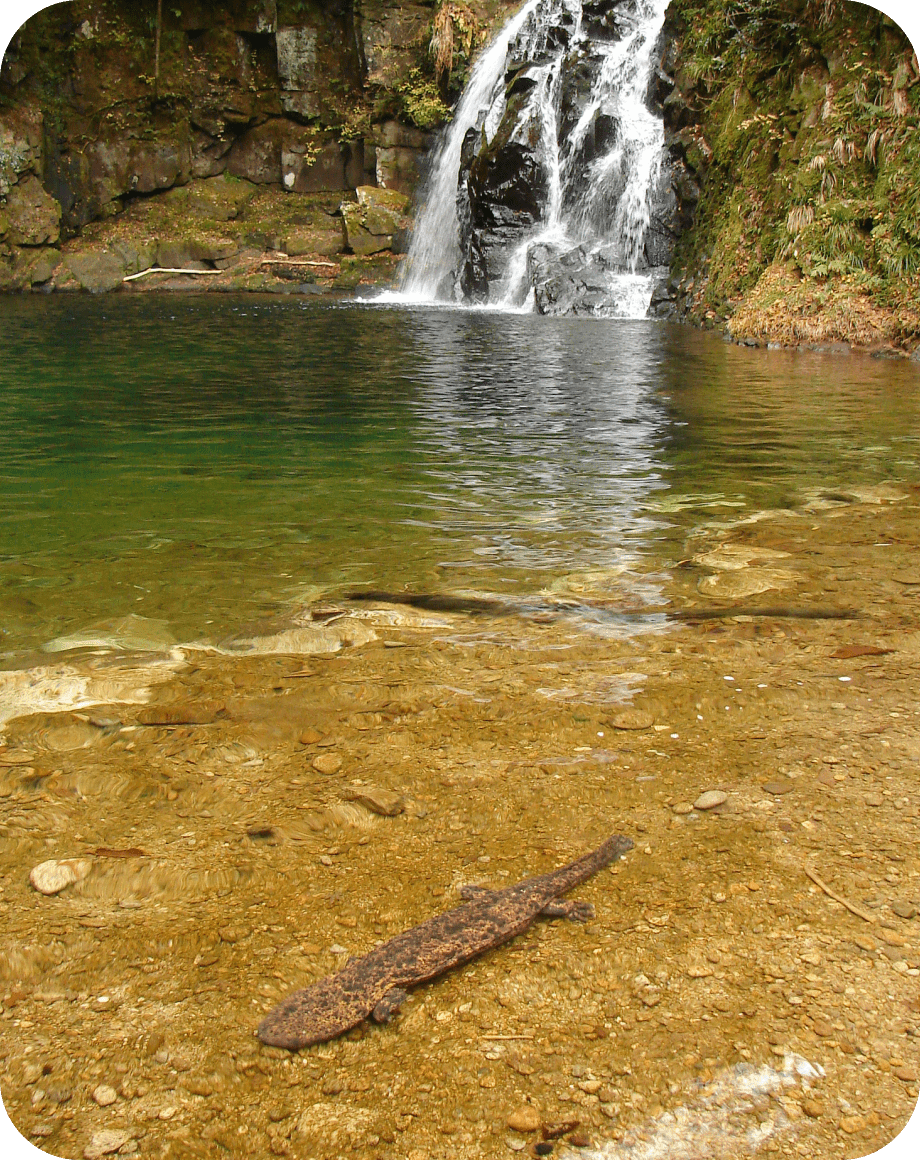
Living fossil salamander
There are only three species of salamanders in the world: the giant salamander, the American giant salamander, and the Chinese giant salamander. Long-lived giant salamanders live their entire lives in water.
It is the job of the male, called the nushi, to protect the eggs.
They became extinct in Europe a long time ago, and now live only in Japan, China, and North America,
The giant salamander is very rare in the world.
The salamander is a "living fossil" that looks almost exactly the same as it did about 30 million years ago.
- Japanese name
- Japanese salamander
- Scientific name
- Andrias japonicus
- Distribution
- Honshu and Kyushu west of Gifu and Mie
- Spawning grounds
- Rivers in mountainous areas between 300 and 2500m
- Physical characteristics
- Dark brown, irregularly mottled Body long, limbs short Head flat and large, with many warts Eyes small, almost invisible.
- Total length
- Total length averages about 800 mm (maximum length is 150 cm, weighing about 35 kg)
- Habitat
- Estimated to be about 2,000 in mountain rivers.
There are only about 5 places in Japan where they can be observed naturally.Of these, about 20% are native species. - Breeding season
- August to September
WHY?
Giant Salamanders.
Why did it become an endangered species?
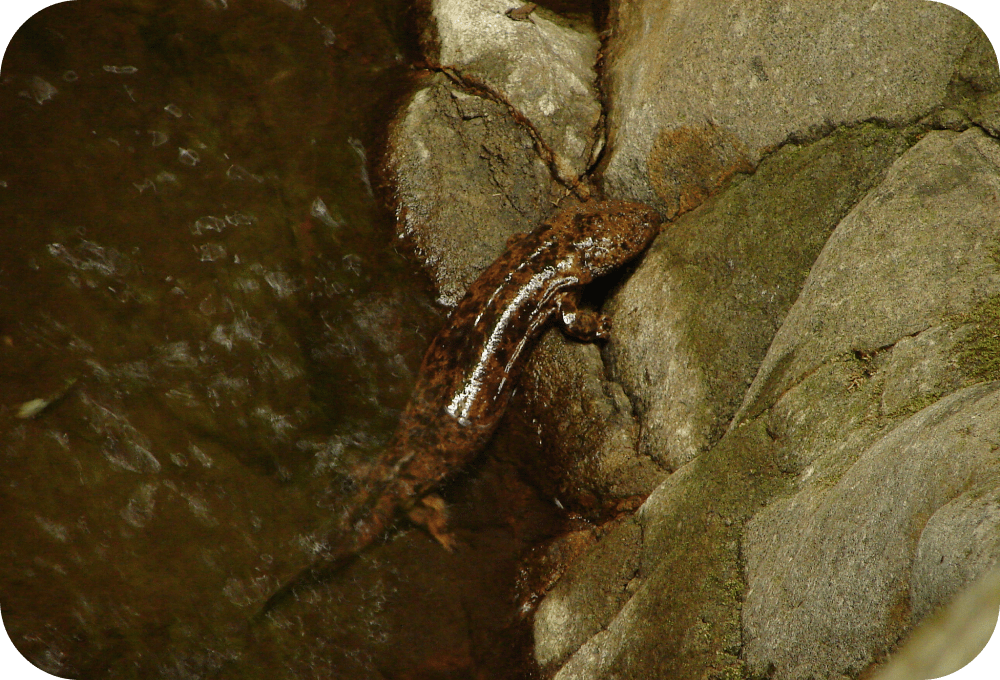
The Globally Rare Giant Salamander
In the Edo period (1603-1867), Siebold, a doctor at the Nagasaki trading post, obtained the giant salamander from the mountains of Suzuka and brought it back to his native country, the Netherlands, where it was introduced to Europe and the giant salamander became known throughout the world.
Habitat Decline and Genetic Pollution with Non-native Species
Habitat loss and genetic contamination with non-native species Salamanders mainly live under large rocks in clean rivers. It is certain that their habitat has been shrinking due to the loss of their former habitat caused by river construction and other factors. There are three major species of salamanders. In Japan, there are the Japanese giant salamander (a native species) and the Chugoku giant salamander (an exotic species), both of which are designated as natural treasures. Interbreeding between the two species has led to a decline in the number of native Japanese giant salamanders, which has directly led to the problem of genetic pollution.
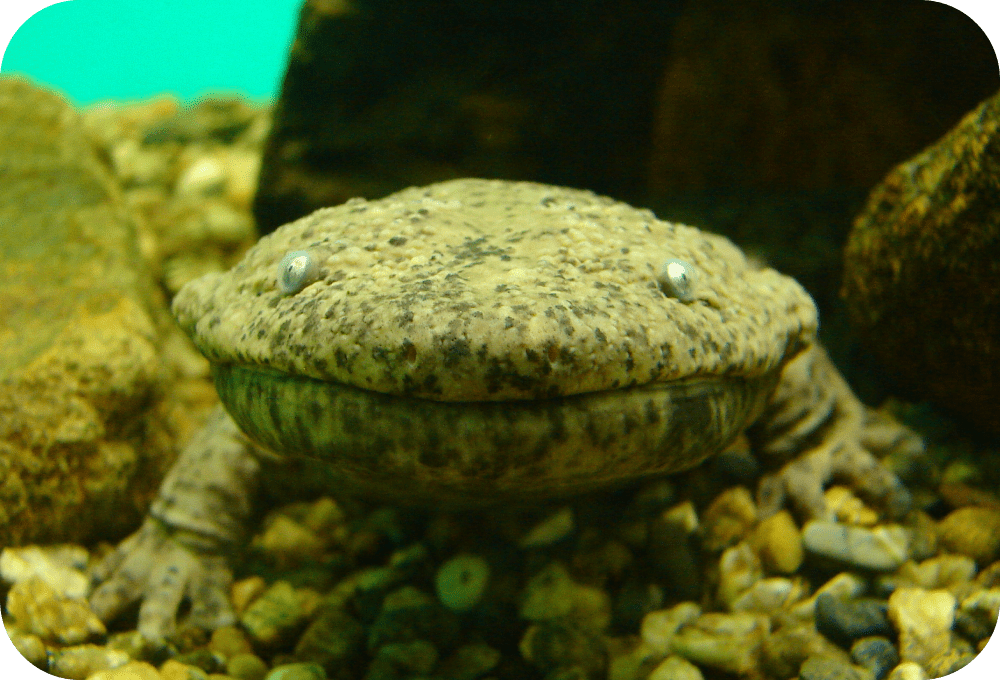
At Akame 48 Falls,
we are working to protect the ecology of the giant salamander!
We are working to protect the salamander ecology at Akame 48 Falls!
KNOW!
Learn about the life of the giant salamander
Search01
Entering the river to search with experts.Salamanders are nocturnal. Therefore, we search for giant salamanders at night. The river at night has currents, and visibility and footing are poor, so we must search slowly and carefully.

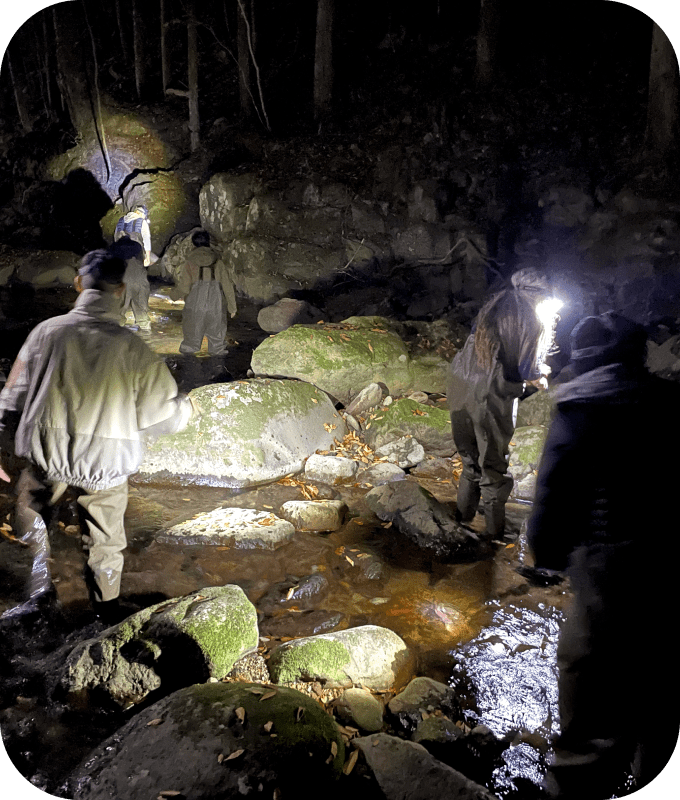
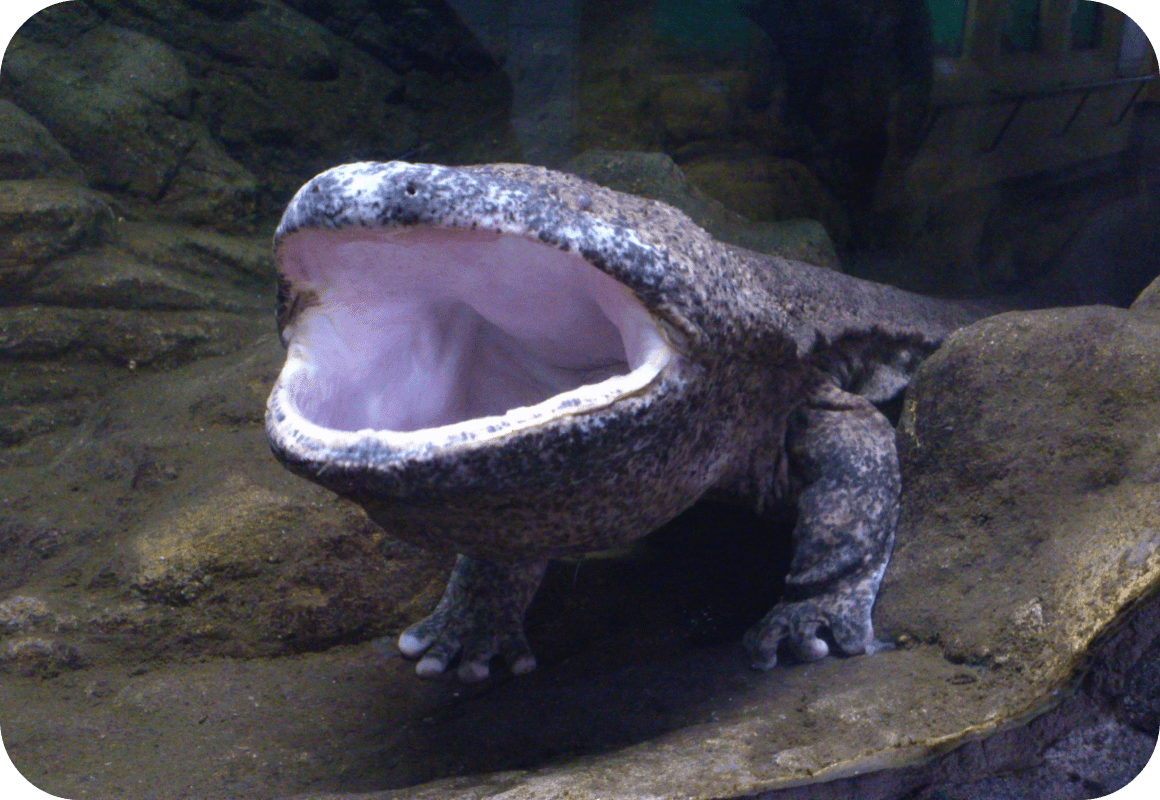
Finding wild giant salamanders02
If you are lucky, you can find a wild giant salamander in the river. Salamanders are creatures that often hide in crevices in rocks to avoid detection. Their behavior varies depending on the season, so your chances of finding one depend on the season.
Measurement03
Observe a demonstration of measurements performed on an individual found for the first time.
When a salamander is found, the presence or absence of a microchip is first checked using a reader. Then they measure and record their total length and weight. Their measurements are very important to manage the condition of the individual.

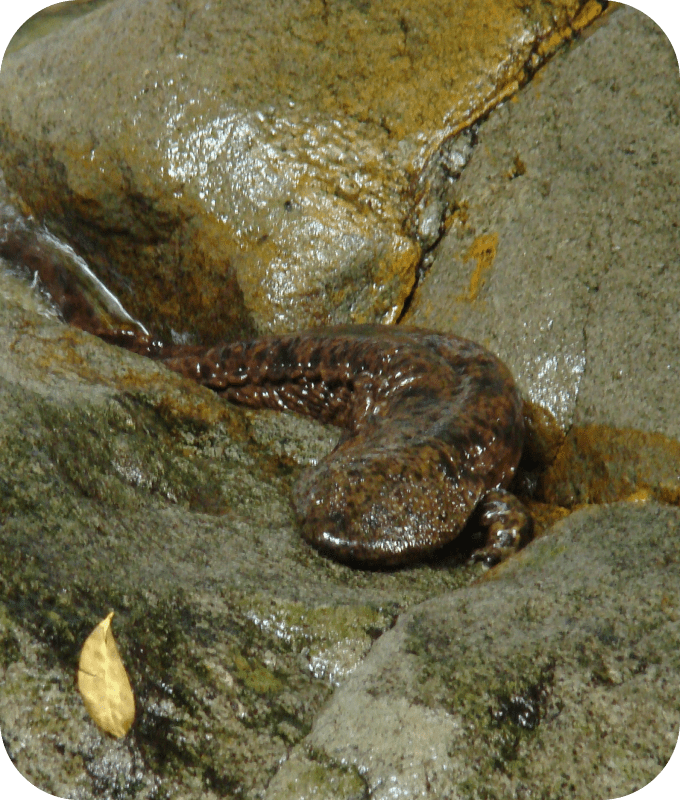
Night Tour Details
Schedule (Duration 5.5 hours)
- 16:30
- Meet at Kintetsu Nabari Station
- 17:00
- Arrive at Akame 48 Waterfalls Eco Tour Desk
- 17:10
- Lecture by an expert
- 17:30
- Put on waders and other equipment
- 18:00
- Visit to the Giant Salamander Center
- 18:30
- Start of the night tour to observe the giant salamander
- 20:15
- Bathing in hot springs
- 22:00
- Dismissal at Kintetsu Nabari Station
- Tour Price
- 30,000 yen (per person, tax included)
- Excluded days
- 12/26~1/6
- Included in the fee
- Waders, life jacket, head light, hand light, towel, expert lecture, onsen bathing fee
Those wishing to stay overnight must make a separate application.
*For those who wish to be picked up and dropped off, we will arrange it free of charge (round trip from Nabari Station)
- Reservation Contact
- Akame 48 Falls Eco Tour Desk
0598-64-2695 - Required Reservation Information
- (1) Date of use (2) Representative name (3) Contact information (4) Number of participants (5) Ages of participants
- Age of participants
- 16 years old and up
- Languages
- Japanese, English
- Minimum number of participants
- 4 people
- Maximum number of people
- 10 people
- Minimum number of participants
- 1 person (*Possible with payment for 4 persons)
- Date of departure
- 14 days prior to departure
- Cancellation fee
- 3 days before: 50%, 2 days before: 80%, the day before or after: 100%.
- Other (Notes, etc.)
- In case of refusal of participation
・Those who have been drinking or under the influence of alcohol
・Those who are not in good health at the time of registration
・Those who are judged to be unable to participate in the tour based on their condition on the day of the tour - Planning and Implementation Company
For inquiries, please contact - Akame 48 Waterfalls Gorge Conservation Association